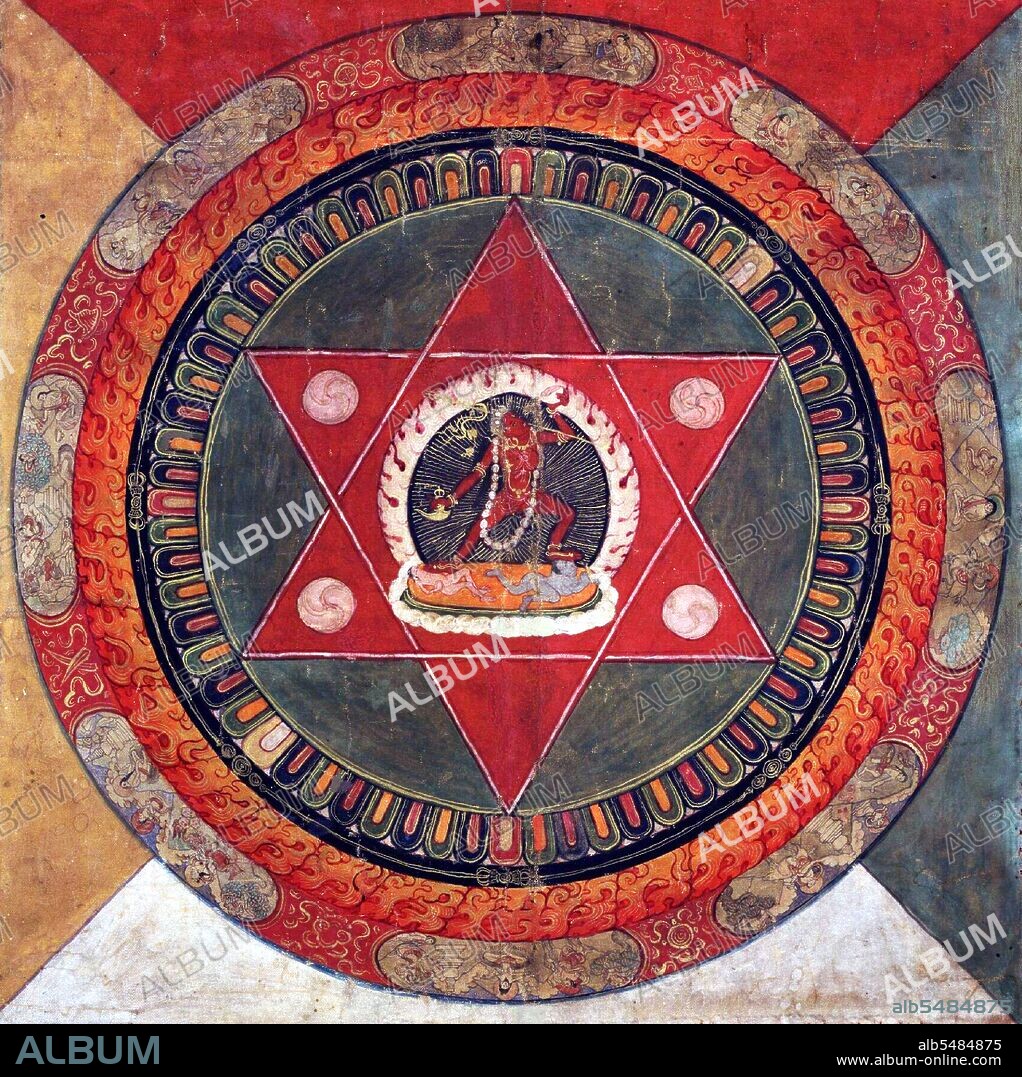alb5484875
China-Tibet: Vajrayogini at the centre of a Tantric Buddhist mandala,19th century

|
Add to another lightbox |
|
Add to another lightbox |



Buy this image.
Select the use:

Title:
China-Tibet: Vajrayogini at the centre of a Tantric Buddhist mandala,19th century
Caption:
Vajrayogini (Sanskrit: Vajrayogini; Tibetan: Dorje Naljorma; Chinese: Yújia kongxíngmu) is the Vajra yogini, literally 'the diamond female yogi'. She is a Highest Yoga Tantra Yidam (tutelary deity), and her practice includes methods for preventing ordinary death, intermediate state and rebirth (by transforming them into paths to enlightenment), and for transforming all mundane daily experiences into higher spiritual paths. Ma??ala is a Sanskrit word that means 'circle'. In the Hindu and Buddhist religious traditions their sacred art often takes a mandala form. The basic form of most Hindu and Buddhist mandalas is a square with four gates containing a circle with a center point. Mandalas have spiritual and ritual significance in both Buddhism and Hinduism. The term is of Hindu origin and appears in the Rig Veda as the name of the sections of the work, but is also used in other Indian religions, particularly Buddhism. In the Tibetan branch of Vajrayana Buddhism, mandalas have been developed into sandpainting. They are also a key part of anuttarayoga tantra meditation practices.
Credit:
Album / Pictures From History/Universal Images Group
Releases:
Model: No - Property: No
Rights questions?
Rights questions?
Image size:
4168 x 4175 px | 49.8 MB
Print size:
35.3 x 35.3 cm | 13.9 x 13.9 in (300 dpi)
Keywords:
ASIA IMAGE • ASIA PICTURES • ASIA • ASIAN IMAGES • ASIAN PICTURES • ASIAN • BUDDHA • BUDDHISM • BUDDHISM, BHUTANESE • BUDDHIST • CHINA • CHINE • CHINESE • CULT, BUDDHIST • HINDU • HINDUS • HISTORIA UNIVERSAL • HISTORIA • HISTORICAL IMAGES • HISTORICAL PICTURES • HISTORICAL • HISTORY IMAGES • HISTORY PICTURES • HISTORY • HISTORY. • MAHAYANA • MANDALA • PORCELAIN • RELIGION • RG VEDA • RIG VEDA • TANTRA • TANTRIC • TIBET • TIBETAN BUDDHISM • TIBETAN • VAJRAYANA • VAJRAYOGINI
 Pinterest
Pinterest Twitter
Twitter Facebook
Facebook Copy link
Copy link Email
Email
